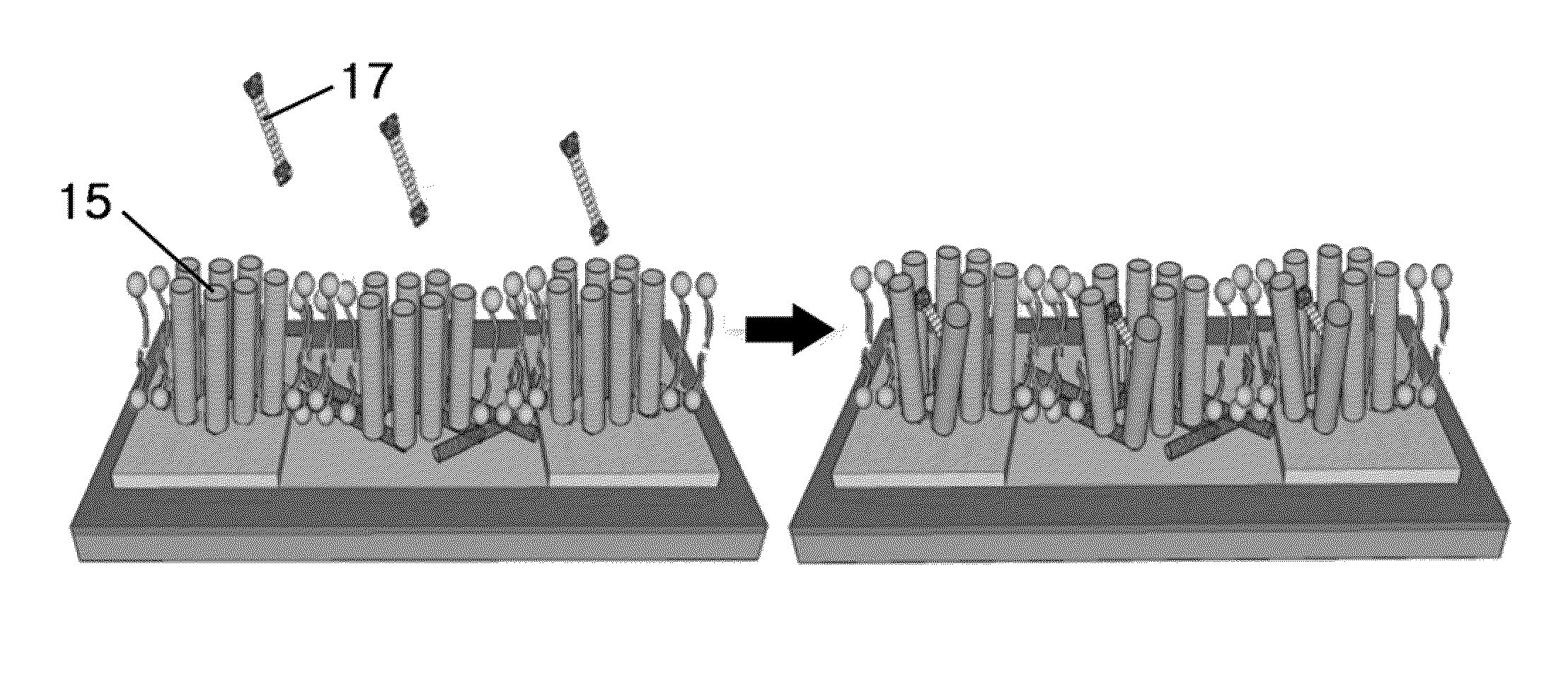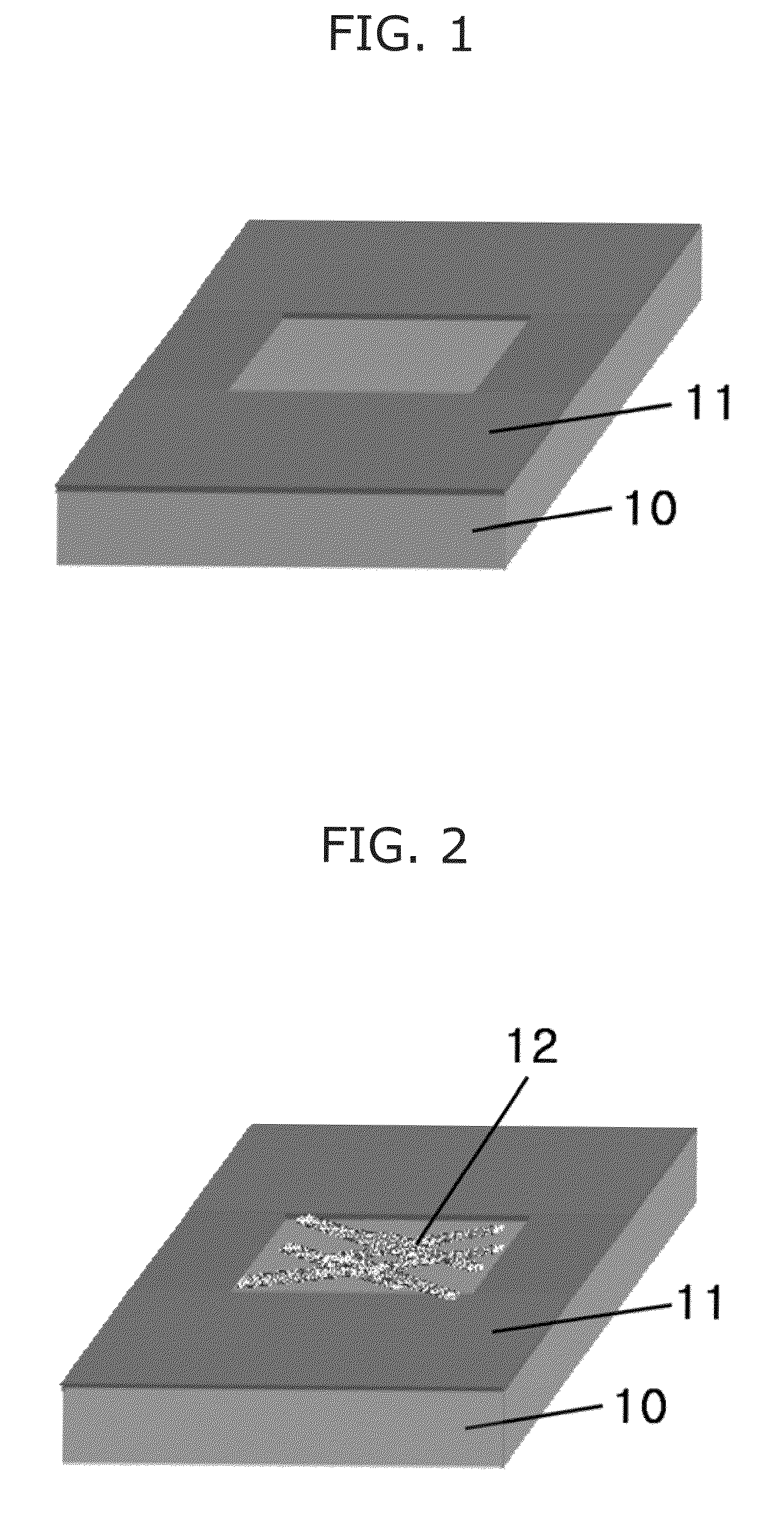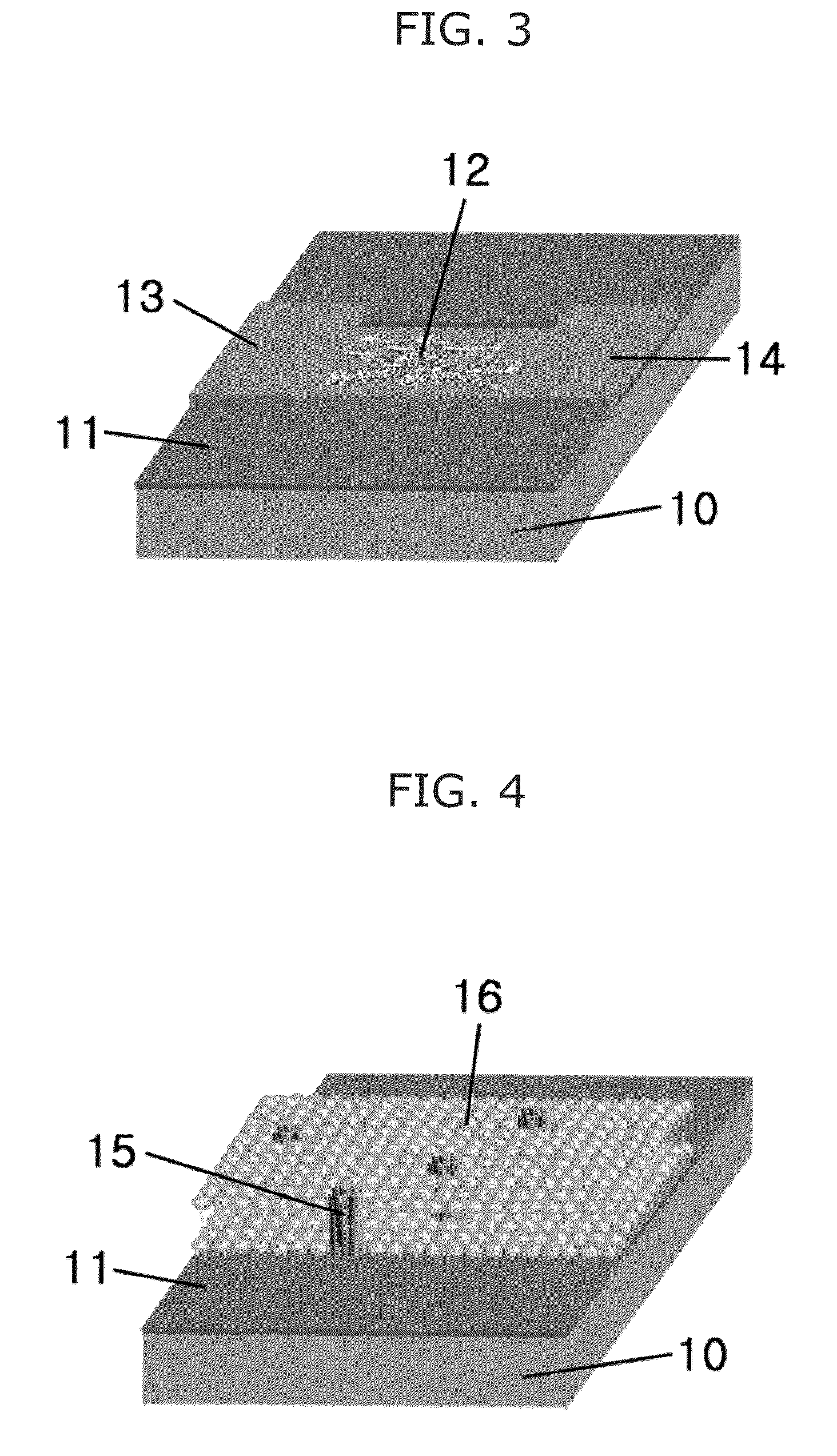Olfactory receptor-functionalized transistors for highly selective bioelectronic nose and biosensor using the same
a bioelectronic nose and functionalized transistor technology, applied in biochemistry apparatus and processes, instruments, materials analysis, etc., can solve the problems of limited sensitivity, large system size, and inferior specificity of the electronic nose thus developed, so as to improve the selectivity and sensitivity of detection, rapid detection, and high throughput
- Summary
- Abstract
- Description
- Claims
- Application Information
AI Technical Summary
Benefits of technology
Problems solved by technology
Method used
Image
Examples
example
Example 1
Preparation, Immunoblot Analysis, and Electron Microscopy of an Olfactory Receptor Protein
[0062](1) Preparation of Human Olfactory Receptor 2AG1 Protein (hOR2AG1)
[0063]As an olfactory receptor protein, human olfactory receptor 2AG1 (hOR2AG1) protein was used. The hOR1AG1 protein is a fusion protein with a glutathione-S-transferase (GST)-tag at the N-terminus, which is expressed in Escherichia coli (E. coli).
[0064]The cultured cells were centrifuged at 7,000 g for 30 min, harvested, and resuspended in 1 ml of phosphate buffered saline (PBS). The resuspended cells were dissolved by an ultrasonic treatment for 5 min, and insoluble fractions including membrane fractions and cell debris were centrifuged at 15,000 g for 30 min and collected. Subsequently, to remove membrane-incorporated proteins other than the hOR1AG1, insoluble fractions including the hOR2AG1 were incubated in a solution containing 2 vol % Triton X-100, and then membrane fractions containing hOR2AG1 were collect...
example 2
Manufacture of Human Olfactory Receptor-functionalized Transistors
[0071]First, purified single-walled carbon nanotubes (swCNTs) (Carbon Nanotechnologies) were dispersed in 1,2-dichlorobenzene with ultrasonic vibration for 20 min to prepare a swCNT suspension. The concentration of the swCNT suspension was 0.1 mg / ml or less.
[0072]An octadecyltrichlorosilane (OTS) self-assembled monolayer (SAM) was patterned by photolithography technique on a degenerately doped silicon substrate covered with a 300 nm thick thermal oxide layer. The patterned substrate was put in the swCNT suspension generally for about 10 sec and rinsed with 1,2-dichlorobenzene. The swCNT was selectively adsorbed on a bare portion of the substrate, in which the OTS was not formed. After a typical photolithography, contact electrodes were fabricated by Au / Pd (30 nm / nm) evaporation and lift-off methods. The gap between source and drain electrodes was 4 μm.
[0073]1 μl of the hOR2AG1-containing fraction collected in Example ...
example 3
Measurement of Effects of Odorants on Biosensor Using Human Olfactory Receptor-functionalized Transistors of the Present Invention
[0074]To measure the effects of odorants on the biosensor using human olfactory receptor functionalized transistors, drops of 9 μl phosphate buffered saline (PBS) were placed onto the human olfactory receptor functionalized transistors manufactured in Example 1. Subsequently, the source-drain current was monitored after the introduction of a solution containing specific odorants. A bias voltage of 100 mV was maintained at all time during the electrical measurement (See FIG. 8).
[0075]FIG. 9 shows four similar odorants (amyl butyrate (AB), butyl butyrate (BB), propyl butyrate(PB), and pentyl valerate (PV)) used for characterization of sensor reactions.
[0076]A 1 M stock solution of the odorants was prepared, and additional dilutions (from 10−1 M to 10−13 M) were obtained by serial 1:10 dilutions in PBS.
[0077]The hOR2AG1 is known to be activated by amyl butyr...
PUM
| Property | Measurement | Unit |
|---|---|---|
| time | aaaaa | aaaaa |
| pH | aaaaa | aaaaa |
| pH | aaaaa | aaaaa |
Abstract
Description
Claims
Application Information
 Login to View More
Login to View More - R&D
- Intellectual Property
- Life Sciences
- Materials
- Tech Scout
- Unparalleled Data Quality
- Higher Quality Content
- 60% Fewer Hallucinations
Browse by: Latest US Patents, China's latest patents, Technical Efficacy Thesaurus, Application Domain, Technology Topic, Popular Technical Reports.
© 2025 PatSnap. All rights reserved.Legal|Privacy policy|Modern Slavery Act Transparency Statement|Sitemap|About US| Contact US: help@patsnap.com



